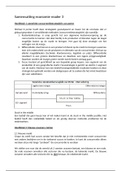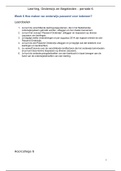Samenvatting
SUMMARY Thinking and Deciding - University of Groningen
- Vak
- Instelling
- Boek
Comprehensive summary of the entire book of judgment and decision-making by Nancy S. Kim. Additional lecture notes are added and integrated in the chapters, with a topic of populism and social media that was given in lecture 5 in the course 'thinking and deciding' (2024/2025) at the RUG
[Meer zien]













